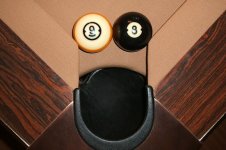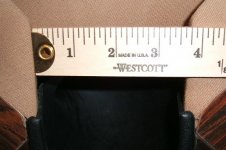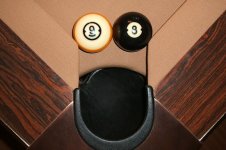The miter angle is the funnel look of the pocket on both sides, the down angle is the angle in which the pocket facings sit. In the video the speaker never mentioned anything about down angles which makes it pretty clear to me that the guy is just another run of the mill fitter as he'd like to refer to himself, better off sticking to snooker tables. The down angles are nust as important as the miter angles are. Let me explain. To a degree, the greater the down angle of the pocket facing, the more it kills the speed of a ball entering the pocket mouth, for instance a 12 degree pocket down angle is going to let the object ball bounce back and forth a little more easy than say a 15 degree down angle will. A pocket with no down angles, meaning the facings are standing straight up and down are going to cause the object ball to jump straight up out of the pockets because they are not allowing the object ball to be driven down onto the slate pocket shelf killing the speed of the object ball. If a table has deeper pocket shelfs, you want say a 15 degree down angle so as to not only kill the speed of the object ball entering the pocket, but also in doing so, it causes the object ball to drift deeper into the throat of the pocket increasing the chance of pocketing the ball. On a GC, a 15 degree down angle makes the pocket play to big, so a 13 or 12 degree down angle allows the object ball to have a little more back and forth bobble effect in the jaws of the pocket instead of drifting the object ball further into the throat of the pocket where there's no pocket shelf to support the ball still sitting in the pocket.




